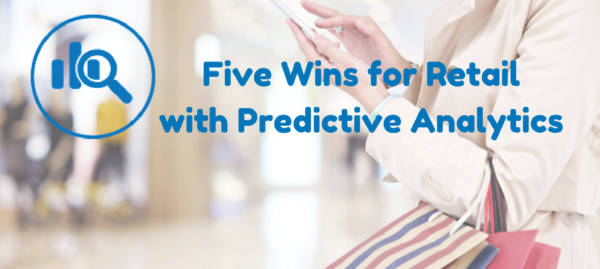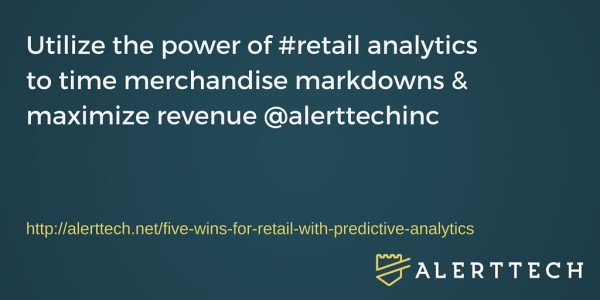Originally published in The Predictive Analytics Times
We’ve heard a lot about how big data is changing the world, and even more about the changes that are still to come. There is more data collected now than at any other point in history, but many decision-makers have yet to figure out exactly what to do with all of this information.
Thankfully, in most businesses that hinge on an efficient supply chain, the inherent value of using predictive analytics is understood and accepted. Retailers, and especially clothing retailers, can benefit in many ways from gazing into the crystal ball that predictive analytics can provide. Here are a just a few examples to keep in mind.
1. Improving Inventory Controls
Perhaps the biggest benefit to retailers that big data, and ultimately predictive analytics, can provide is a firmer handle on inventory. Some might think it’s a matter of ordering the same as last year to have enough stock, but predictive analytics is much more insightful.
Yes, historical sales data is considered. However, so are prevailing weather trends, lead times, consumer trends and seasonal fluctuations. For example, a retailer using last year’s sales figures for something like umbrellas may be left short if the effects of this year’s El Niño event in the American South are as strong as anticipated. Using ALL of the available data to make informed purchasing decisions helps retailers stay ahead of the curve.
2. Getting the Markdowns Right
Markdowns are a tricky bit of business for retailers. Customers expect to find great deals on the clearance racks. However, marking items down too early means lost money for what could have been a full-price item, and doing it too late can mean it languishes on the rack forever.
Typically, this decision has been at the discretion of the staff. However, when one retailer relied on the power of analytics to choose the timing of markdowns, the items sold sooner and at a higher price an astounding 90% of the time.
3. Ensuring the Correct Sizing
Once the initial rush to get seasonally appropriate clothing is over, there is a problem at many stores. There is an abundance of clothing left in the smallest sizes and the largest sizes, but there is virtually nothing left in the middle. This phenomenon is frustrating to customers and retailers alike.
Predictive analytics can draw on data at an aggregate level to ensure much better estimates of the number of items to stock in each size. The ability to examine data on a regional scale rather than store-by-store can create big savings in the logistical expenses of relocating merchandise alone.
[xyz-ihs snippet=”TOFU2-Retail-Analytics-Button”]
4. Customizing the Experience
By now, most shoppers are familiar with product recommendations from online retailers that are generated by their shopping history and related purchases made by other customers. It is something we have simply come to expect.
The next level is customizing the experience of shoppers in the store. Armed with data from customer loyalty programs, sales associates can make recommendations based on the customer’s tastes, rather than their own.
5. Is There a Downside?
So far it seems like everything about collecting data on customers and their shopping habits to fuel predictive analysis is positive. For the most part, it is. It leaves many people wondering if there is any downside, and the answer is, unfortunately, yes.
Every time a new piece of data is collected, it needs to be stored somewhere. If you outsource the analysis of customer data, it needs to be stored by the company performing the service too. The more data that is collected and the more places it is stored, the greater the risk of a security breach. This list of “The Top 5 Retail Breaches” should give some sense of the scope of the problem.
[Tweet “Get the Most out of #Retail Operations with Predictive Analytics @alerttechinc”]
Whether a thief’s target is merchandise or information, it’s up to retailers to implement the most sophisticated systems they can to thwart those with evil intentions. A fear of data loss isn’t entirely unwarranted, but it’s certainly no reason to miss out on getting the most out of retail operations with predictive analytics!
Conclusion
As you can see, incorporating predictive analytics into the retail strategy can touch all areas of the business. While there is a risk in every data collection effort, it can be mitigated by staying on top of the latest security protocols. Through improved inventory controls, appropriately timed markdowns, and ensuring the correct size is in stock for most customers, predictive analytics proves that a personalized shopping experience isn’t so elusive after all.
[xyz-ihs snippet=”TOFU2-Retail-Analytics”]

